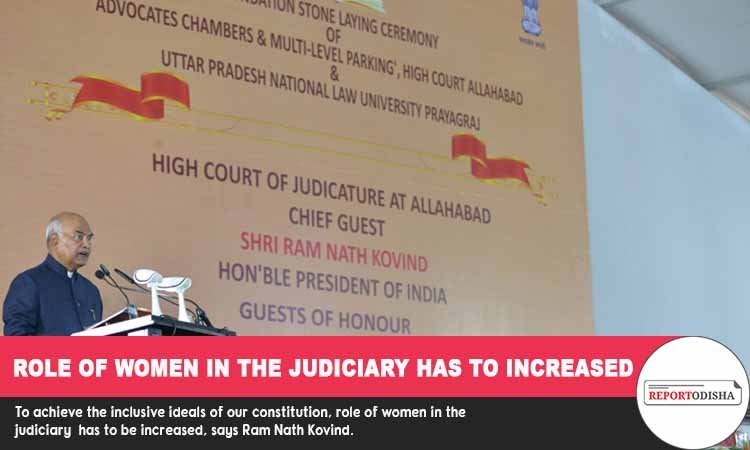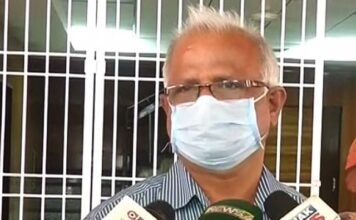If we have to achieve the inclusive ideals of our constitution, then the role of women in the judiciary also has to be increased, said the President of India, Shri Ram Nath Kovind. He was speaking at the foundation stone laying ceremony of Uttar Pradesh National Law University and new building complex of Allahabad High Court at Prayagraj, Uttar Pradesh today (September 11, 2021).
Referring to the Allahabad High Court’s historic decision to enroll India’s first woman lawyer, Ms. Cornelia Sorabji in 1921, the President termed that decision a forward-looking decision in the direction of women empowerment. He said that last month, a new history was created of the women’s participation in the judiciary with the appointment of nine judges, including three women judges, in the Supreme Court. He noted that the presence of four women judges out of the total 33 judges appointed in the Supreme Court is the highest ever in the history of the judiciary. He said that these appointments have paved the way for a woman Chief Justice of India in future. He emphasized that establishment of a truly just society would be possible only when the role of women in the judiciary increases. He noted that at present the total strength of women judges in the Supreme Court and High Courts together is less than 12 per cent. He said that if we have to achieve the inclusive ideals of our Constitution, then the role of women in the judiciary also has to be increased.
The President said that he had seen closely, struggle of the poor for getting justice. Everyone has expectations from the judiciary, yet, generally people hesitate in taking the help of the courts. This situation needs to be changed in order to further increase the confidence of the people in the judiciary. He said that it is the responsibility of all of us that – everyone gets justice in time, justice system should be less expensive, decisions should be in the language understood by the common man, and especially women and weaker sections should get justice in the judicial process. This would be possible only when all stakeholders associated with the judicial system bring necessary changes in their thinking and work culture and become sensitive.
The President said that it is the need of the hour to continuously strive on many aspects, from expediting the disposal of pending cases to increasing the efficiency of the Subordinate Judiciary in order to boost the confidence of general public in the judiciary. Our judicial process would be strengthened with the arrangement of adequate facilities for the Subordinate Judiciary, increasing the number of working judges and providing enough resources as per the provisions of the budget. He expressed confidence that the Allahabad High Court would set an example in all such areas with the cooperation of the State Government.
Speaking about the choice of Prayagraj for the Uttar Pradesh National Law University, the President said that a major identity of Prayagraj has been as a center of education. Given the important role of Allahabad High Court and the reputation of Prayagraj as a center of education, it is the ideal place for this Law University.
The President said that quality legal education plays an important role in strengthening the rule of law based system. World class legal education is one of the priorities of our society and country. In this era of knowledge economy, the ambitious policy of becoming a knowledge super-power is being implemented in our country. Establishment of Uttar Pradesh National Law University is a step forward in this direction.
The President said that it is relatively easy for any institution to establish all the systems in a well thought out manner at the very beginning. Once the system is created, the process of improving it becomes complicated. Therefore, he urged all stakeholders to adopt the best practices in the Uttar Pradesh National Law University from the very beginning. He said that a world-class institution should be built by implementing world’s best practices in all aspects like creation of modern facilities, selection of students, appointment of teachers, preparation of curriculum, selection of styles of pedagogy etc.



























